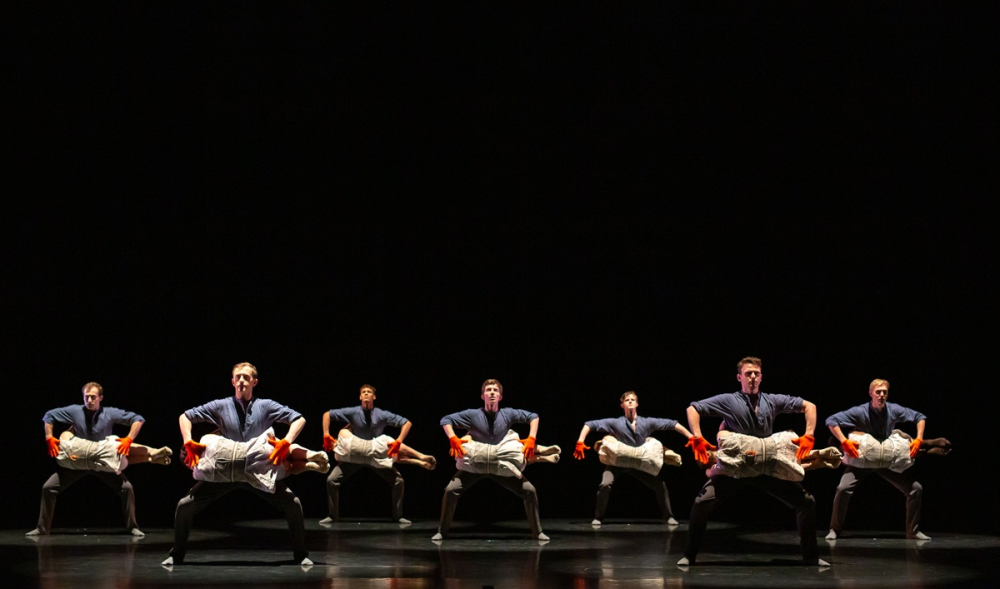St James Theatre
Wellington
15 March 2025
Reviewed by Mona Williams

Fifty years ago when Scottish Ballet last performed in New Zealand it was billed as the farewell tour of Dame Margot Fonteyn. To partner her in the Romeo and Juliet pas de deux was Valery Panov, a Russian Jewish refusenik. I attended that packed performance at the Wellington Opera House, was deeply moved to see Dame Margot, and overjoyed at the audience’s enthusiasm in thanking her. The evening’s entire performances were impressive. I returned home with Panov’s autograph on my toe shoes. Decades later I feel honoured to be reviewing this year’s joint programme of the Royal New Zealand Ballet with Scottish Ballet.
Schachmatt
Viewing this quirky, witty, frenetic, tantalizingly erotic programme-opener sends my senses spinning. The Scottish Ballet’s performance of Schachmatt (Checkmate), jettisons categories. Cayetano Soto’s work begins with stiff precision in the sculptured arm designs of the ten dancers. Emerging against a black background, with precisely, rather militaristic tongue-in-cheek movements to French singing, the dancers then erupt in uninhibited lifts, torso isolations and accentuated bum movements. The pulsating ‘organs’ of this chess-game-in-dance are attributes such as the dramatic, the complex, the incongruous; the athletic superlative technical command and the knowing nod to the zany style of Bob Fosse.
Dressed in (almost pornographically) tight hot pants, riding hat and knee-high socks, the eye is riveted to the seamless movement changes in response to music as varied as that of a Michel Legrand French jazz classic or to the Spanish rhythms of Los Panchos. Exploiting every nuance in their entrances and exits, their pas de deux or entire-corps formations, their speed in hip jerks or robotic, synchronized, sharp head turns, and their multitude of lifts, these force one to wonder, “What next?”. Well, one final surprise awaits; a soothing end. Contrastingly soft, lyrical Spanish (and Pasifika-style) wrist twirls; they are palm-size expressions of subtle poetry. These expressions adorn their necks, as they dance goodbye with their backs to the audience.
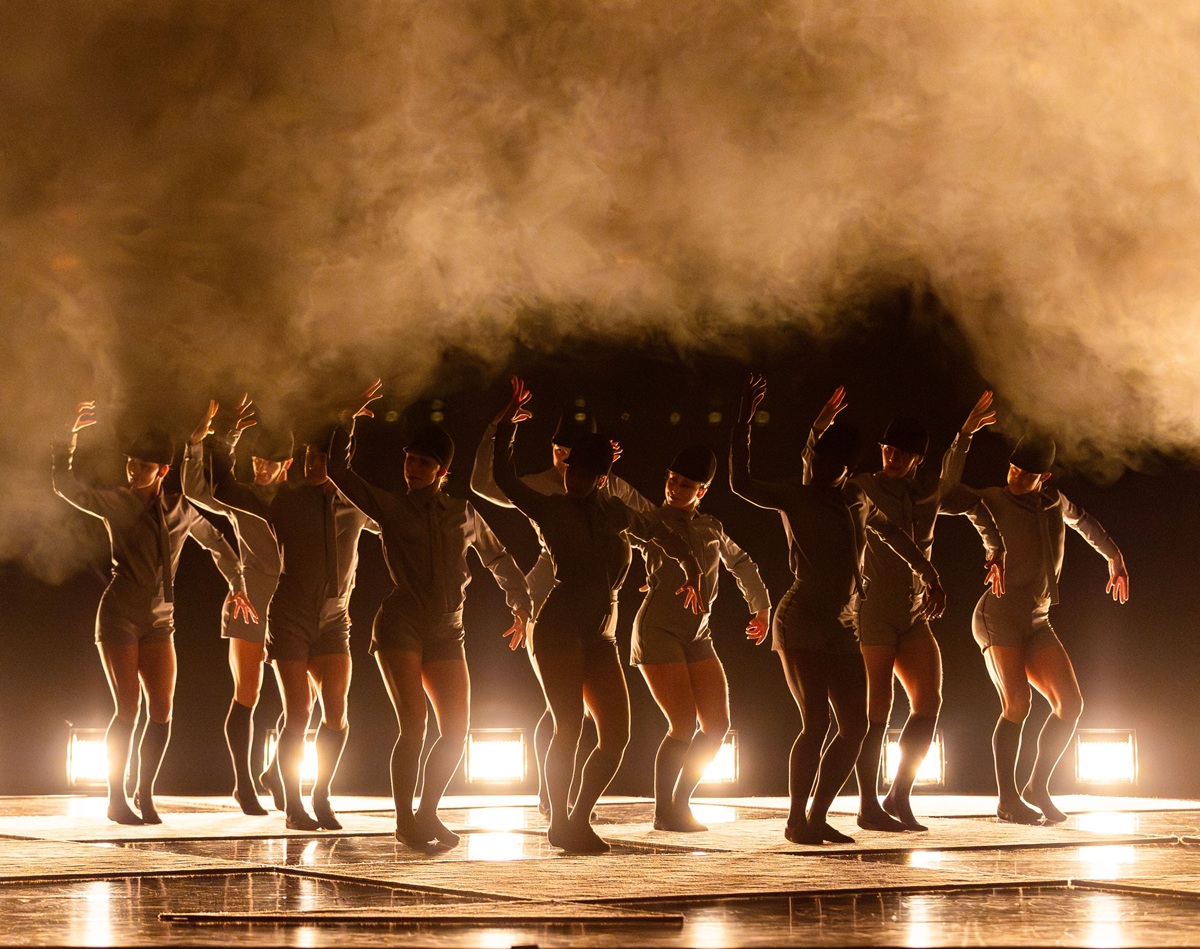
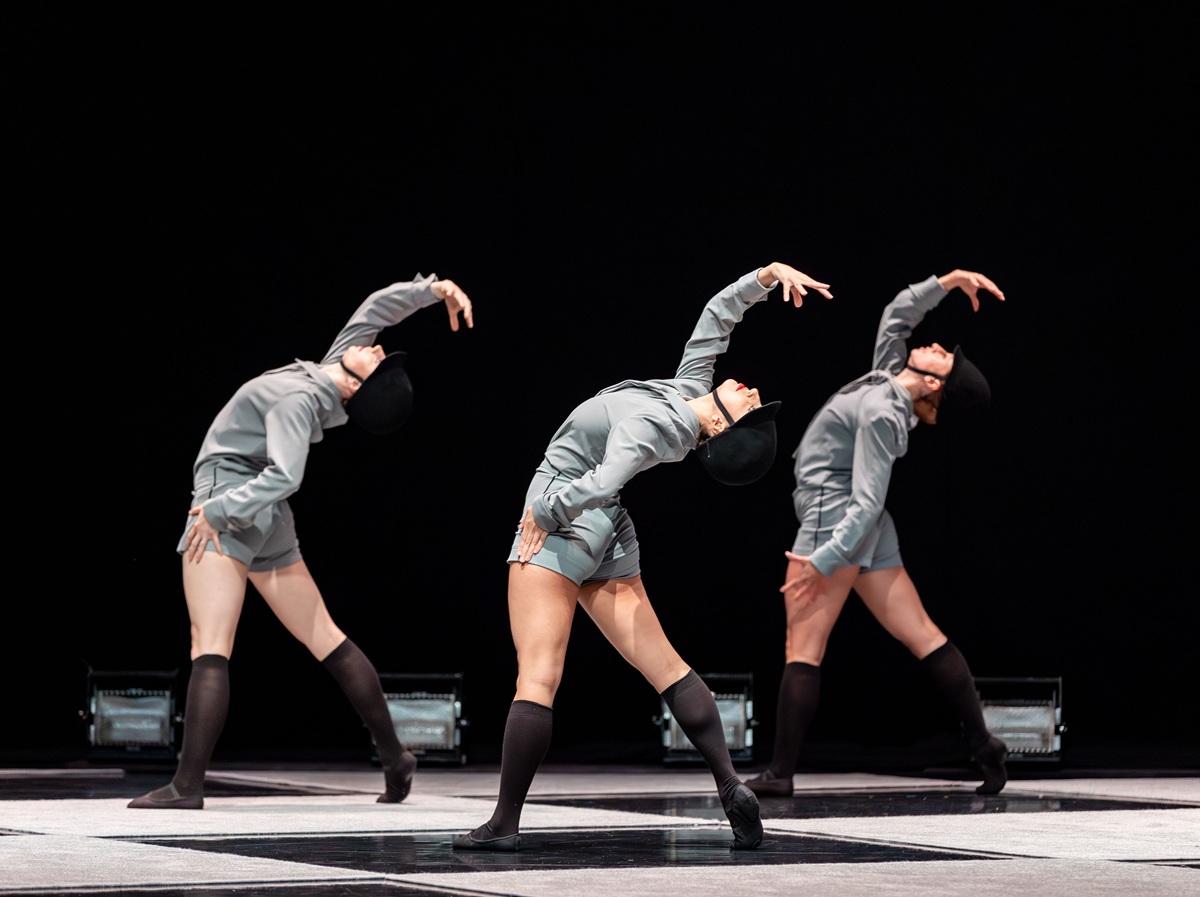
Prismatic
This treasured gem is a backward glance at a pivotal work. Prismatic serves to emphasize the foundations on which the RNZB’s present achievements are built, while making obvious the artistic distance travelled; that is, the grand jete this Company has executed. The present choreographer, Shaun James Kelly, preserves the hallmarks of the Ballet Company of the 1960s, on the one hand. He highlights the emphasis on pure, fluid classical lines of the arms, flowing extensions, elegant arabesques, traditional geometrical formations, and includes ‘the daring artistic abstraction’ in vivid orange − Raymond Boyce’s arresting backcloth. Extending Prismatic into a longer work for 36 dancers which explores Brahms’ familiar Variations on a Theme by Haydn (opus 56), Kelly seeks to respect the past artistry of Paul Gnatt and Russell Kerr, while embodying recent visual images to revitalize the work.
The backward slides of the ballerina by her partner, the familiar fish dive, the expected ballon in the jumps, these are satisfying. Whirling the ballerina in a circle close to the floor like an ice figure skater, those movements intertwine with imaginative lifts, a wide spectrum of turns and alluring lighting to shift the mood. A surprising tableau of the male dancer running up a hill of dancers’ backs to pose triumphantly, is a breath-holding moment. While Prismatic retains the dated women’s skirted leotard, and although the ballerina’s response to the percussive drum crescendo is synchronized only some of the time, these minor details do not diminish the enthusiastic response to the final tableau; that is, line after line of elegant dancers running onto the stage for the final, impressive bow.
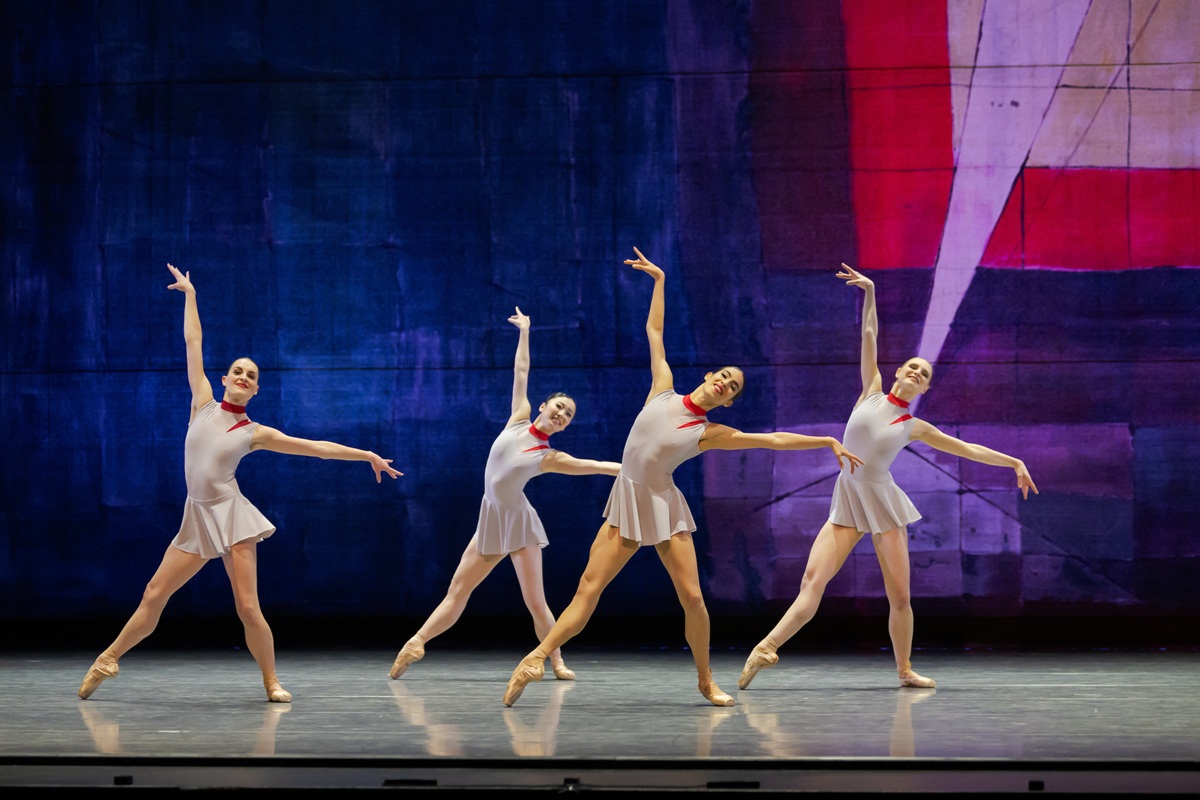
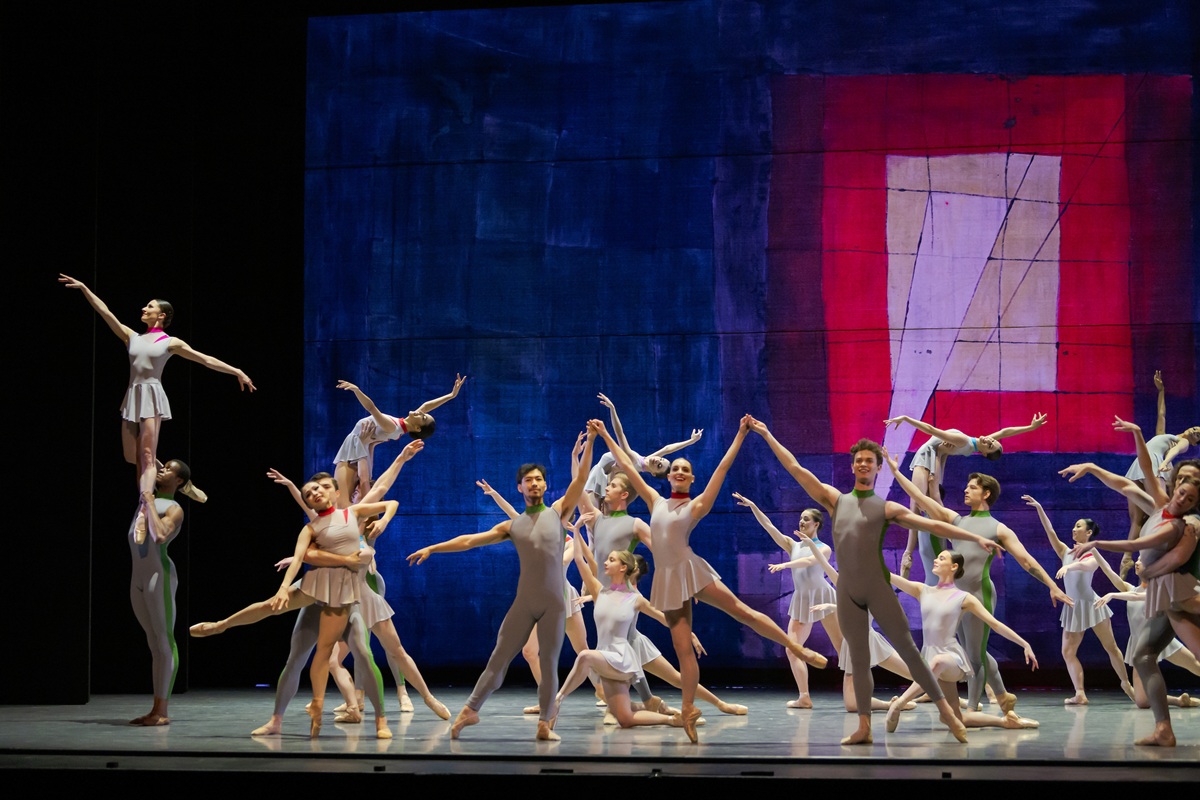
Limerence
This is a RNZB study of the tortured soul of a brutally honest human. Told with inspired economy, it reveals a man’s refusal to wear the garment of self-delusion. Bare chested, he endures the whips and scorns of Truth, which pummel his torso and fell his entire body. The woman who cares about him tries repeatedly to spare him the full force of Life’s storms by clothing him in a jacket of resistance. Preferring to bear the agony of a truthful existence, he discards the garment yet again, is struck down by Fate and dares to walk upright once more, into the teeth of the gale of reality.
This is my favourite performance. Minimalist in its narration, dark in its mood, stubborn in its repetitive efforts at confronting Life’s truth, it is a profound study in human courage and integrity. With only two couples on stage, both costumed in black, one couple has the major role. To the music of Schubert, they dance on a darkened stage with empathy, mutual support, affectionate understanding and respect for each other. The choreography resists glib, smooth pas de deux. The ballerina remains unrelenting in proffering a jacket to shield him from Life’s forceful blows. They exit the stage without his fully accepting the possibility of a jacketed existence.
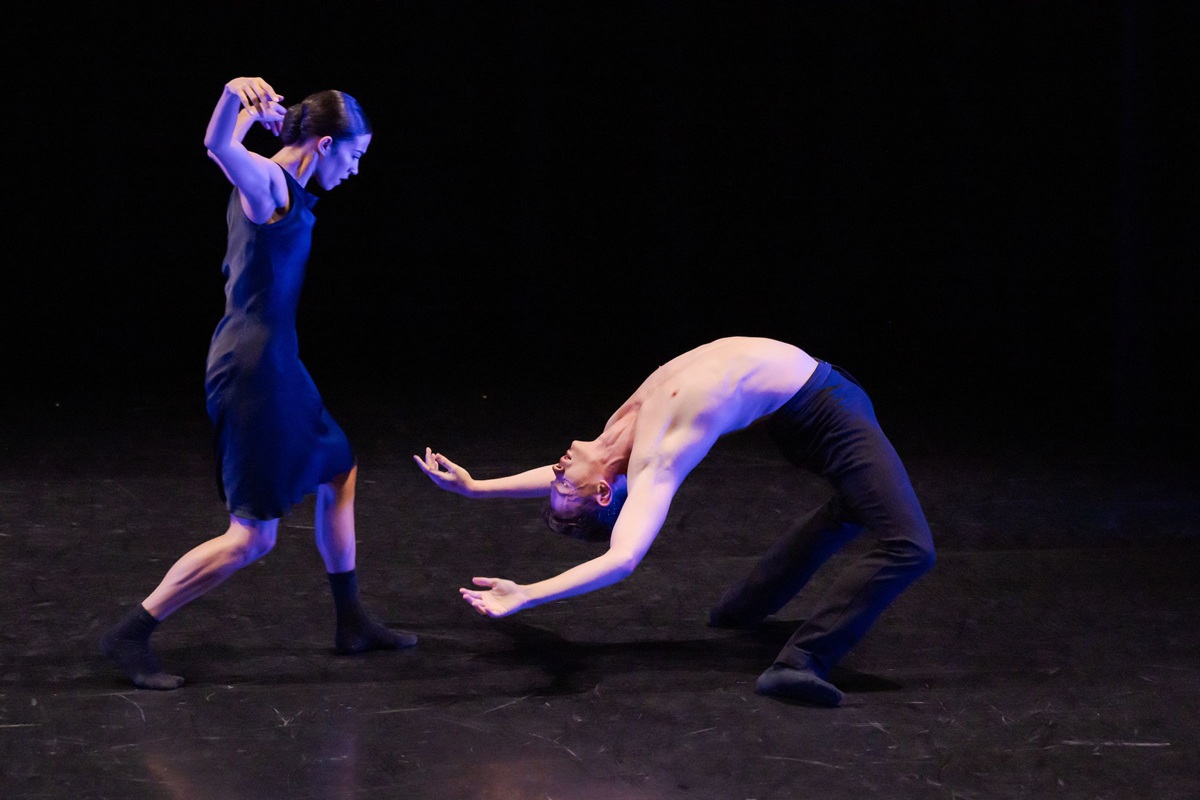
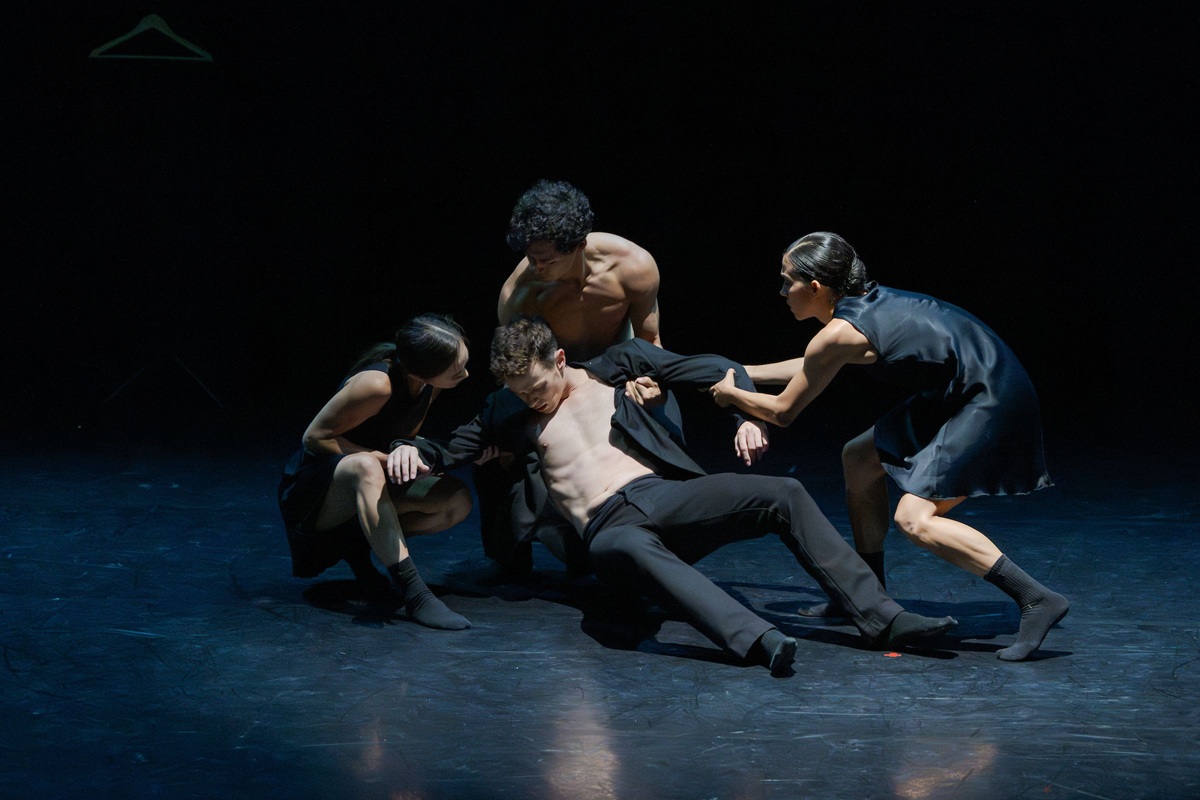
Dextera
Dexterity is its central motif. A brightly coloured glove falls from ‘heaven’, is picked up, marvelled at and worn on the right hand of a male. After exploring its astonishing powers he uses it to manipulate …what else?…females! Assured of its power, ‘an army’ of similarly gloved males arrives with stiff female mannequins tucked under their arm, held securely by the gloved hand. This madcap, tour de force contemporary style projected hilarity, technical prowess and social commentary. Are former female mannequins, once transformed into self-actualised humans, likely to hen-peck males?
Is this Dance a work exploring the outer reaches of human creativity? Holding oneself stiffly involves muscle control to the Nth degree. Regardless of the issues interpreted, one thinks this Dance is illuminating, the atmosphere generated is exuberant. The tone is positive and just a small step this side of lunacy. Its ambiguity invites the audience to arrive at many meanings. The well-choreographed ending unites the auditorium in a hand clapping, joyous rendition of Mozart’s music in Calypso rhythm. Dextera was a runaway crowd-pleasing end to the programme.
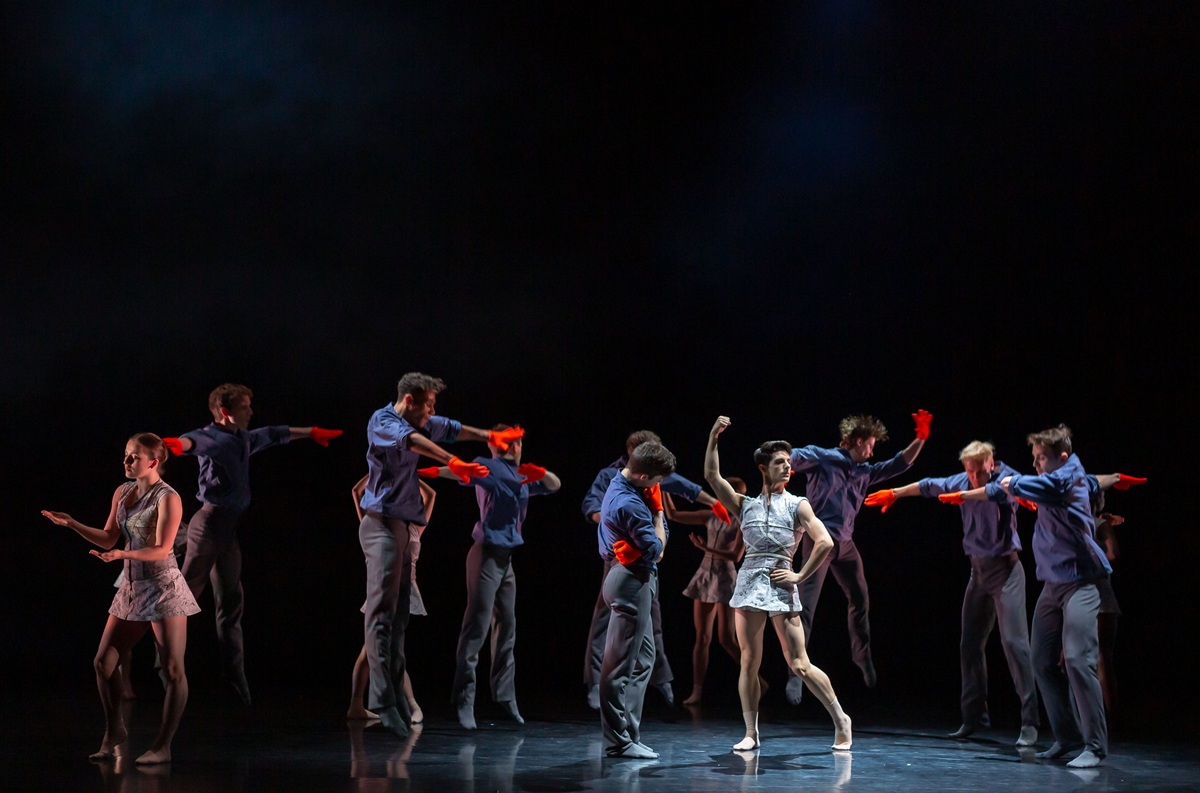
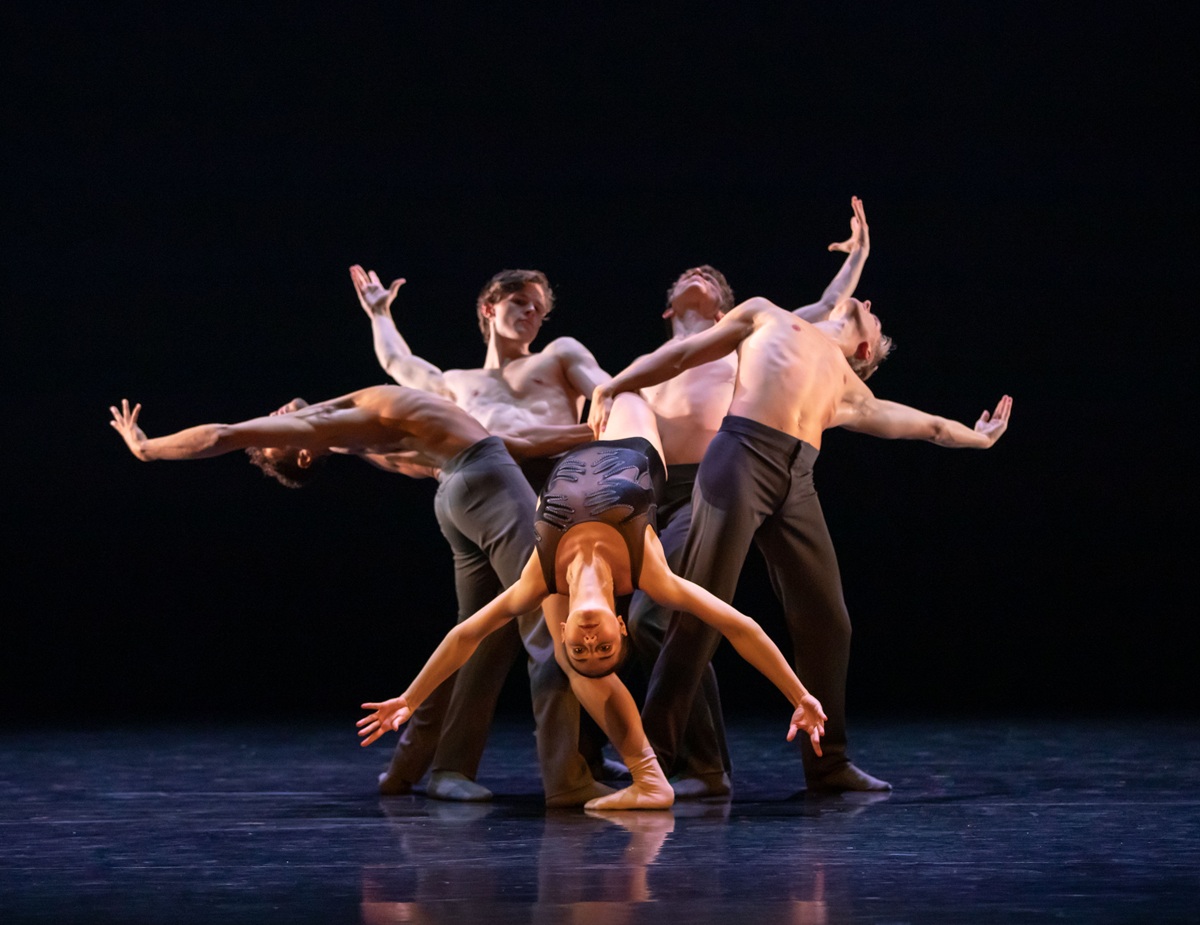
Gallery
Gallery is loading. Please wait. Javascript will need to be enabled to view it.

